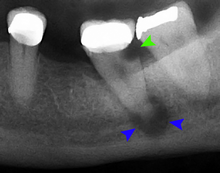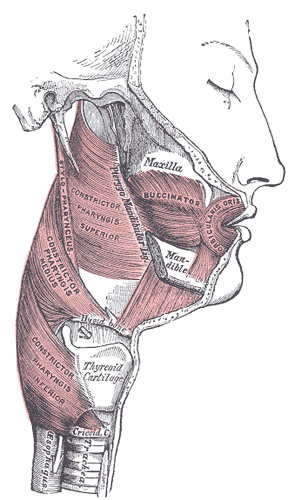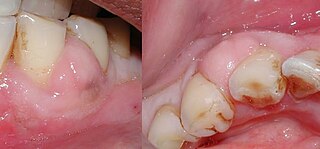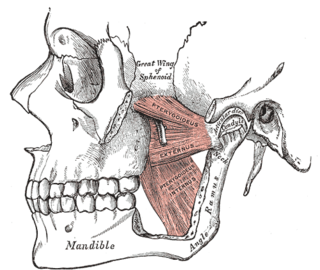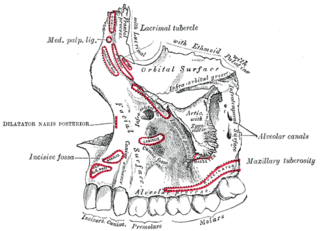Anatomy of mouth

The anatomy of the oral cavity affects the progression of infection and dictates the severity of disease. In other words, where the infection starts will determine the pattern of its spread and its catastrophic potential based on the surrounding anatomy.
Oral cavity
The oral cavity serves as the starting point of the digestive track and facilitates breathing as a channel for airflow to the lungs. The borders of the oral cavity include the lips in the front, cheeks on the side, mylohyoid muscle/associated soft tissue below, soft and hard palate above, and the oropharynx at the back. The most important structures within the mouth include teeth for chewing and the tongue for speech and assistance with swallowing. The oral cavity is lined with specialized mucosa containing salivary glands that moisten food, breakdown sugars, and humidify air prior to entering the lungs. The roots of the upper teeth are anchored into a bone called the maxilla, more commonly known as the hard palate, at ridges called the alveolar process. The roots of the lower teeth are anchored into a bone called the mandible, more commonly known as the jaw, at their respective alveolar processes. The surface of the oral cavity between the teeth and the inner side of the lips are called the oral vestibule. [10] [11]
Surrounding the oral cavity, there are many different muscles that facilitate chewing, opening the mouth, and swallowing. Each muscle, group of muscles, or separate anatomical compartment is encased in a thin fibrous layer of connective tissue called fascia. Normally, the fascia of adjacent structures are in direct contact with each other. However, air or pus can occupy the space between adjacent fascia, known as fascial planes, and collect over time. As the air pocket or pus enlarges within the fascial planes, the structures surrounding the abnormality can become compressed or shifted out of its normal place. These phenomena of compression and deviation due to a growing infection/air pocket drive the progression of disease into potentially life-threatening situations. [2]
Spread of oral infection
Mouth infections spread from the root of the infected tooth through the jaw bones and into potential spaces between the fascial planes of surrounding soft tissue, eventually forming an abscess. These potential spaces are usually empty, but can expand and form a pocket of pus when an infection drains into them. The potential spaces are categorized into primary and secondary spaces.[ citation needed ]
Primary space
A primary space is a potential space between adjacent soft tissue structures that communicate directly with the infected tooth through the eroded bone. In the upper jaw (maxilla), the primary spaces are the buccal and vestibular spaces. The most clinically significant structures that dictate the pattern of infectious spread are the buccinator muscle and the maxillary sinus. Infection that originates above the buccinator's attachment point with the maxilla will spread laterally into the buccal space. Infection that begins below the buccinator's attachment point with the maxilla will spread inferiorly into the vestibular space. Rarely, the infection will spread upwards into the maxillary sinus and cause a sinusitis. [2]
In the lower jaw (mandible), the primary spaces are the sublingual, submandibular, and submental spaces. The location of the mylohyoid dictates the spread of infection. It attaches to the mandible along a line that separates the sublingual and submandibular space. If an infection begins above the mylohyoid's point of attachment, then the infection will spread to the sublingual space. If the infection originates below the mylohyoid's point of attachment, then the infection will spread to the submandibular space. The submental space is located behind the mentalis muscles, and infections spread to this space when the oral infection begins at the roots of the mandibular incisors because they are so long. [2]
Secondary space
Primary spaces are the result of direct spread from the infected tooth, while secondary spaces are the result of spread from primary spaces. In the oral cavity, mouth infections from primary spaces can spread to fascial planes between the muscles of mastication (masseter, medial pterygoid, and temporalis) or within the deep neck spaces. The space between the muscles of mastication is collectively known as the masticator space and they are all connected with each other at the back of the throat. Therefore, when an infection spreads to the masticator space, significant swelling, tenderness, and trismus are usually present. Deep neck spaces, another set of secondary spaces, are located between fascial planes that separate the deeper structures of the neck into discrete compartments. They are important because they begin at the back of the throat and depending on the space, can track downwards to the chest cavity or encase the windpipe. Infections that involve the deep neck spaces are rare, but must be treated immediately with surgery to washout the infection because they can compromise the airway and lead to fatal complications like mediastinitis. [2] [3]
